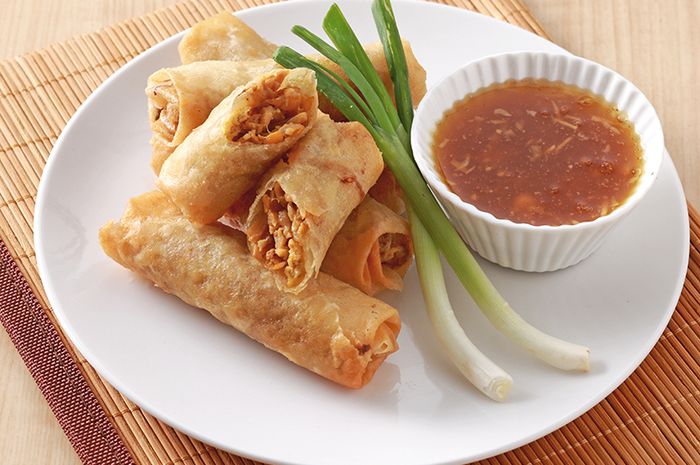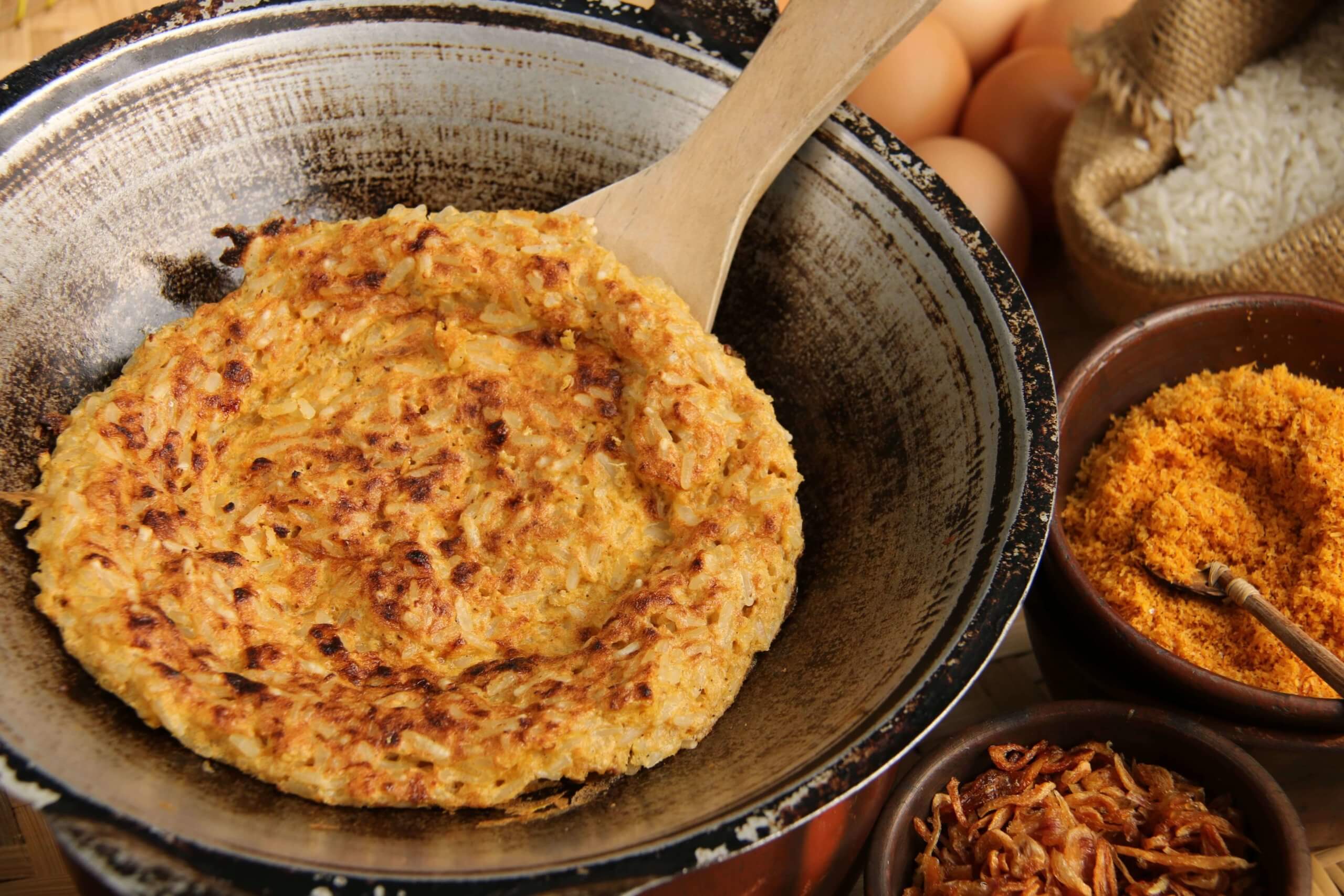
Savoring Jakarta’s Fiery Soul: The Story of Kerak Telor
In the sprawling, humid metropolis of Jakarta, a city of ceaseless motion and modern ambition, there are tastes and aromas that serve as anchors to its past. Amidst the symphony of roaring motorbikes and the glittering facades of skyscrapers, a plume of charcoal smoke carrying the scent of toasted coconut and savory egg can stop a passerby in their tracks. This is the call of Kerak Telor, a dish that is not merely a street food snack, but a fiery, crunchy, and theatrical performance that encapsulates the soul of the city’s indigenous Betawi people.
To call Kerak Telor a simple “omelette” or a “savory pancake” would be a profound understatement. It is a culinary artifact, a taste of history served on a piece of paper, prepared with a dramatic flair that has become as much a part of its identity as its ingredients. It represents a resilient culture, a specific time and place, and a flavor profile that is defiantly, unapologetically Jakartan. To understand Kerak Telor is to understand a piece of Jakarta itself—its history, its people, and its enduring spirit.
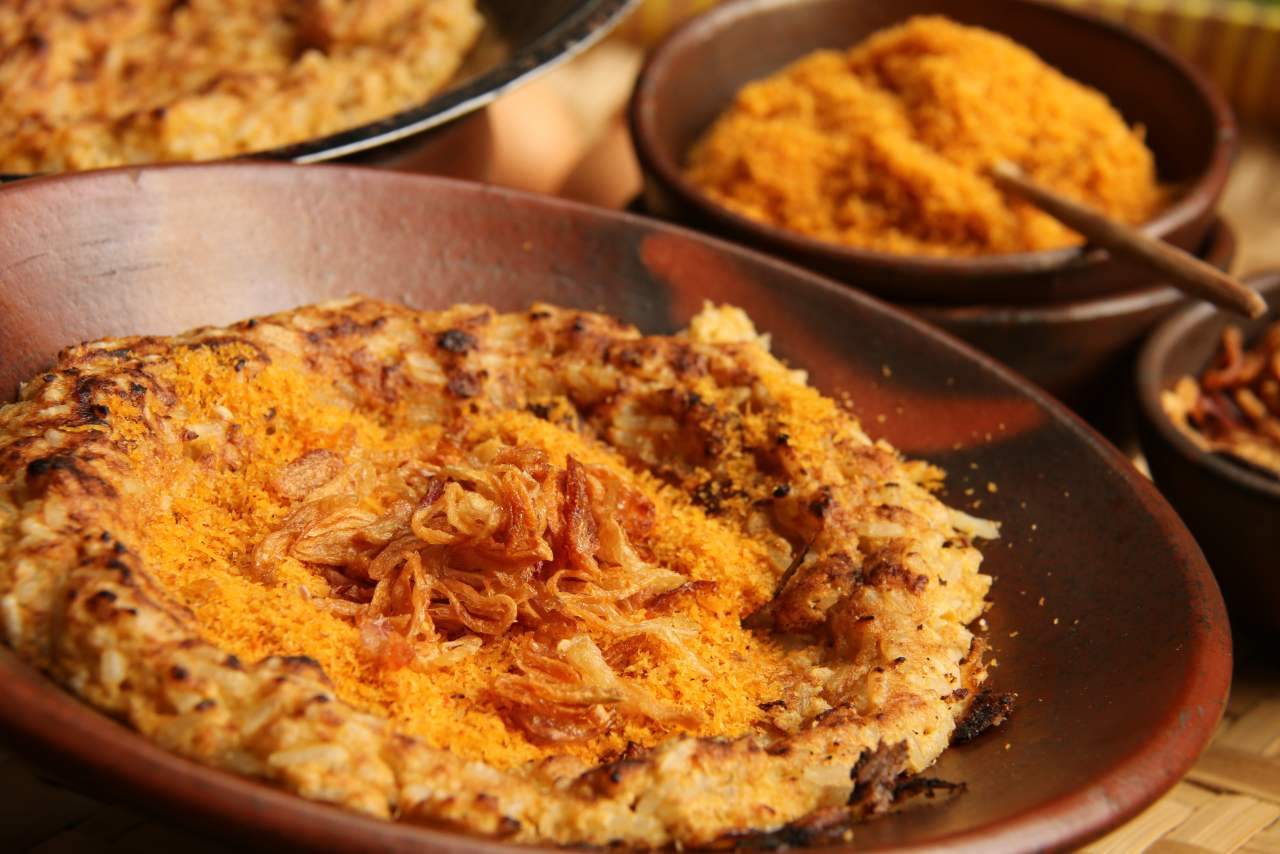
An Anatomy of a Betawi Classic
At its core, Kerak Telor is a delicate balance of humble ingredients transformed into a complex tapestry of textures and flavors. The foundation begins with white glutinous rice (ketan putih), which is soaked in water for several hours to soften it. This is not just any rice; its sticky, chewy quality is essential for the dish’s final texture.
The vendor, often a man referred to with the respectful title of Abang, spoons a small amount of this soaked rice into a small, single-serving wok-like pan. There is no oil. The rice is dry-fried for a moment over a charcoal brazier (anglo), the intense, direct heat beginning the cooking process. Then comes the star of the show: the egg. A choice is typically offered—a standard chicken egg (telur ayam) or, for the connoisseur, a duck egg (telur bebek). The duck egg is the traditional and preferred option, lending a richer, creamier, and more robust flavor that stands up to the other powerful ingredients.
The egg is cracked directly over the rice and swiftly mixed with a blend of ground spices, which usually includes chili, salt, pepper, and sugar. This mixture is spread thin across the pan, binding the grains of rice into a cohesive, pancake-like form. As it cooks, the Abang sprinkles on the two most crucial components of its flavor profile: serundeng and ebi. Serundeng is a fragrant condiment made from grated coconut, toasted until golden brown with a mix of spices like galangal, turmeric, and coriander. It provides a sweet, nutty, and slightly gritty crunch. Ebi, or dried shrimp, is ground into a powder, imparting a potent wave of savory umami that is the dish’s signature salty kick.
The final flourish is a generous scattering of bawang goreng, or crispy fried shallots, which adds another layer of aromatic sweetness and a satisfying, brittle crunch. What emerges is a dish that plays with every part of the palate: savory, sweet, spicy, and salty, with a textural journey from the crispy crust to the chewy rice and the tender egg.

The Theatre of Fire: A Culinary Spectacle
What truly sets Kerak Telor apart from other street foods is its unique and dramatic cooking method. The preparation is a performance, a piece of culinary theatre passed down through generations. The vendor, seated on a low stool, presides over his charcoal fire with practiced ease. The small wok is his stage.
After the egg and rice mixture has cooked on one side and solidified, the most captivating moment arrives. The vendor does not use a spatula to flip the omelette. Instead, he inverts the entire wok, holding it upside down directly over the glowing charcoal. The top of the Kerak Telor, now facing the intense heat, begins to sizzle, smoke, and char. This is the crucial step that gives the dish its name. Kerak means “crust” in Indonesian, and this direct exposure to the fire creates a deliciously smoky, slightly burnt, and irresistibly crispy surface.
The vendor must be a master of timing, knowing the precise moment to pull the pan away before the crust turns from perfectly charred to acrid. The air fills with a thick, aromatic smoke that is the unmistakable advertisement for the delicacy being prepared. Once cooked, he uses a metal scraper to skillfully dislodge the finished product from the pan, folding it in half and placing it onto a simple piece of paper for serving. This entire process, from raw ingredients to finished product, is a spectacle of skill, heat, and tradition—a far cry from the sanitized, predictable nature of modern fast food.
A Bite of History: Tracing the Roots of Kerak Telor
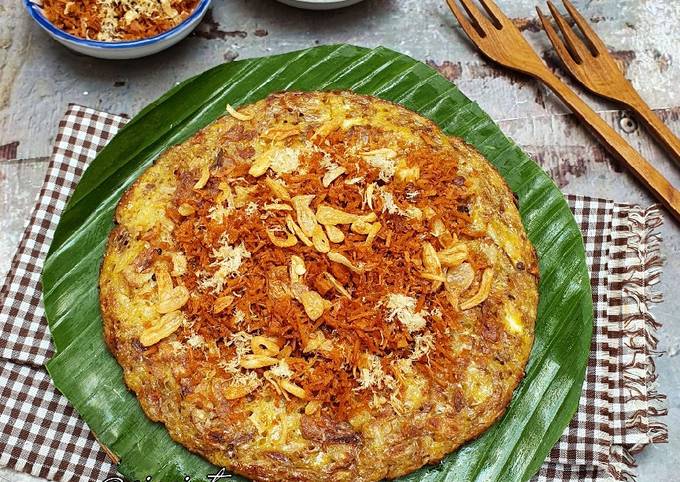
The origins of Kerak Telor are deeply intertwined with the Betawi people, the creole ethnic group native to Jakarta and its surrounding areas. The Betawi culture itself is a rich melting pot, influenced by centuries of trade and interaction with Sundanese, Javanese, Chinese, Arab, and European cultures. This fusion is evident in their language, art, and, most deliciously, their cuisine.
While exact historical records are scarce, folklore suggests that Kerak Telor was born out of ingenuity during the Dutch colonial era in what was then called Batavia. One popular story claims it was an accidental creation, a result of local Betawi people experimenting with leftover glutinous rice and coconut, trying to create a hearty snack. The dish quickly gained popularity within the community and became a staple at local festivities, weddings, and celebrations.
By the 20th century, Kerak Telor had cemented its status as an iconic food of Jakarta. It became particularly associated with large-scale public events, most notably the Pekan Raya Jakarta (PRJ), or the Jakarta Fair, an annual event celebrating the city’s anniversary. For many Jakartans, a trip to the PRJ is incomplete without indulging in Kerak Telor, making it a powerful symbol of civic pride and nostalgia.
The Modern Hunt and an Uncertain Future
Despite its cultural significance, finding authentic Kerak Telor in modern Jakarta can be a challenge. It is not a dish found in restaurants or on every street corner like sate or bakso. Its preparation is laborious, requires specific equipment, and the smoky, hot work is a craft that fewer young people are willing to learn.
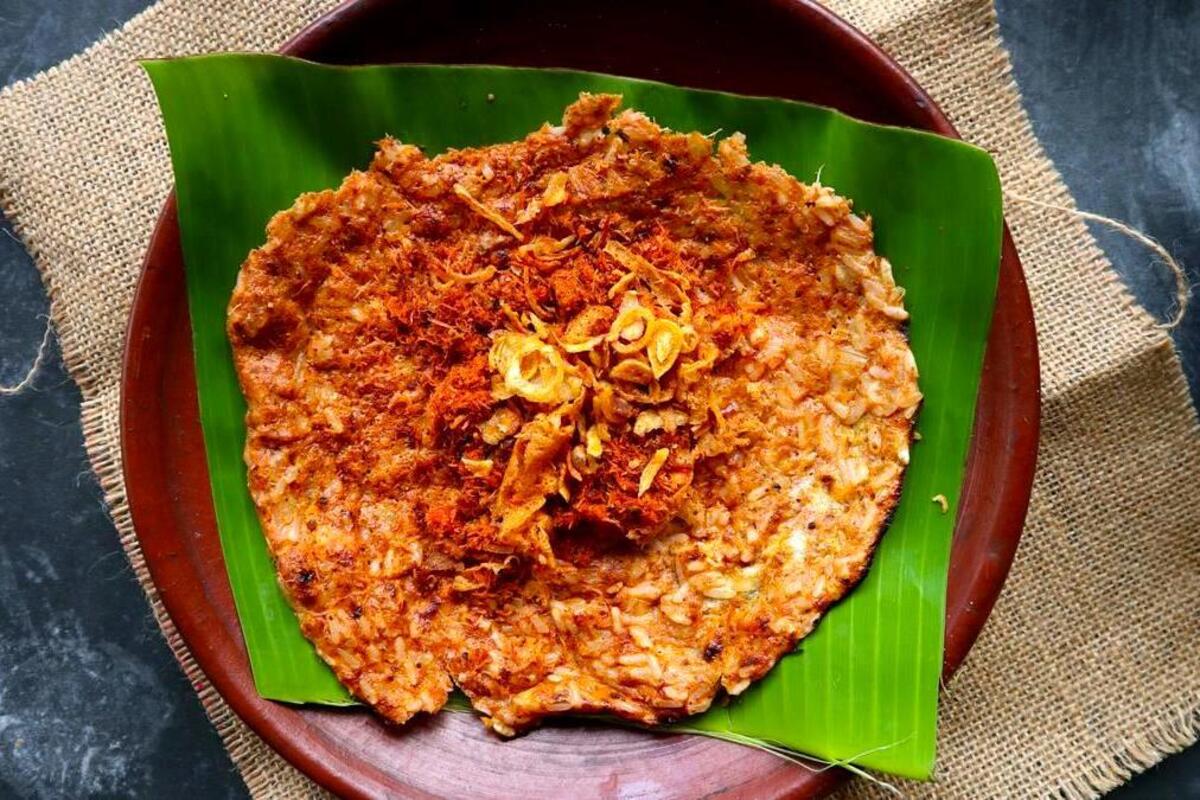
Today, the hunt for Kerak Telor often leads to specific cultural enclaves and tourist hotspots. The vendors are most commonly found in the Kota Tua (Old Town) area, around the National Monument (Monas), and, most importantly, at the Setu Babakan Betawi Cultural Village in South Jakarta—a living museum dedicated to preserving Betawi heritage. During the annual Jakarta Fair, dozens of vendors set up their charcoal braziers, creating a veritable “Kerak Telor alley” that fills the air with its signature smoke.
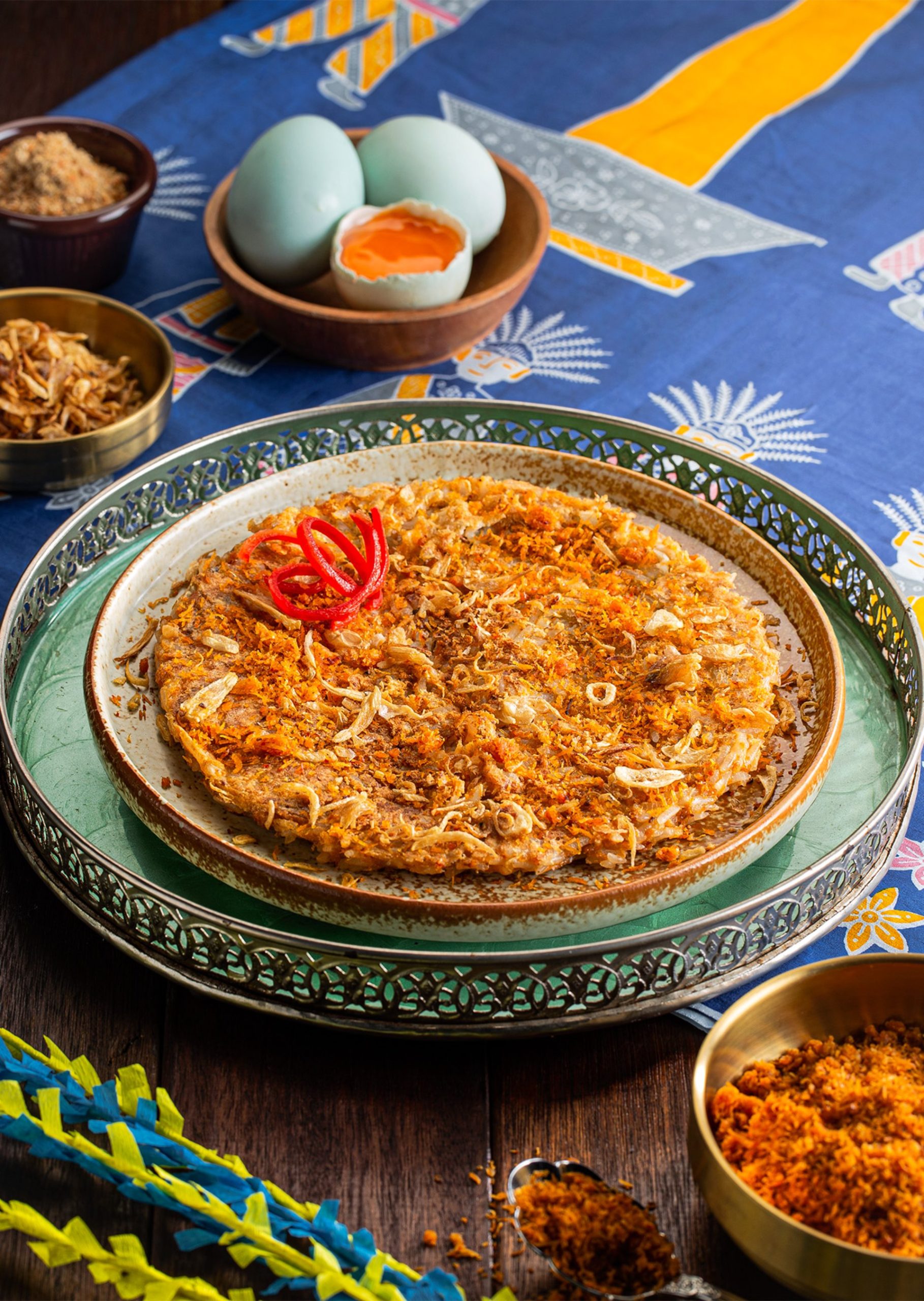
This concentration in specific areas highlights the dish’s precarious position. It has become a “destination food,” something sought out rather than casually encountered. While this has helped preserve its authenticity, it also raises questions about its future. As Jakarta continues its relentless march toward modernity, will there still be a place for this slow, smoky, and traditional craft?
Preservation efforts, primarily driven by cultural institutions like Setu Babakan and the unwavering demand at festivals, are keeping the tradition alive. For the vendors, it is more than a livelihood; it is a guardianship of their heritage. They are the keepers of a flame, both literally and figuratively, ensuring that the taste of Betawi culture does not fade into memory.
To eat Kerak Telor is to participate in a living tradition. It’s an experience that engages all the senses: the sight of the fiery performance, the sound of the scraper against the wok, the smoky aroma, the complex taste, and the unforgettable crunch. It is a reminder that in a city obsessed with the future, the most profound connections can often be found in the flavors of the past. The next time you find yourself in Jakarta, follow the smoke, listen for the sizzle, and treat yourself to a taste of the city’s true, fiery soul. You won’t just be eating a snack; you’ll be consuming a story.

The iconic Betawi dish, Kerak Telor. Jakarta Street Foods pictures collections gallery
The iconic Betawi dish, Kerak Telor. Jakarta Street Foods is a nice pictures and stock photo for your computer desktop or your smartphone device (ipad, tablet, blackberry, iphone, and other device) and also for your personal use. Free available for desktop wallpaper or additional image collections for your all needs. And was uploaded by admit at date July 1, 2025. You can download it in your computer by clicking download button to save image... have nice day and have fun guys..
This 1 image in featured post from 0 Photos/images Gallery and awesome picture selections about The iconic Betawi dish, Kerak Telor. Jakarta Street Foods is available to download. "Download & Save" images/pictures/wallpapers now and this Is one of the post that listed in packed to Category is Foods directory, with image dimension/resolution size is 2560 × 1707 px and size image/picture file is 401 KB with original link post ID is : https://powae.pw/of-course-here-is-a-1200-word-article-about-the-iconic-betawi-dish-kerak-telor/. Get download/save images in post and gallery, "download" images or "preview" it on a bigger image for spesification sample in Large size (full attachment size) here : [Download & View to Large size]. Just Simple way, in thumbnail or in Gallery. *Click images to view Large Size.We collect this wonderful image from online and choose one of the best for you. Pictures collection that posted here was carefully chosen and published by author after choosing the ones which are best among the others. So, ultimately we make it and here these list of best image for your inspiration and informational reason regarding the The iconic Betawi dish, Kerak Telor. Jakarta Street Foods as part of blogsite exclusive updates collection. So, take your time and find the best informations and pictures posted here that suitable with your needs and use it for your own collection and personal use. About Image information: Image has been submitted and You are able to give your opinion as evaluations to our web site value.
Don't forget to comment if you interest with this images, you can share this post to social media like as facebook, twitter, google+, pinterest, stumbleupon, and more. just click social media buttons for share this post The iconic Betawi dish, Kerak Telor. Jakarta Street Foods Now. :)
Thanks for your visit, I hope you happy come to opo wae, wis opo wae, and get what you're looking for. And hope sometimes you will come back again here. All you need to do is help us develop by discussing this The iconic Betawi dish, Kerak Telor. Jakarta Street Foods if you like it "leave your comment". have fun, Thank you.



